Eric Lonergan in Philosophy of Money:
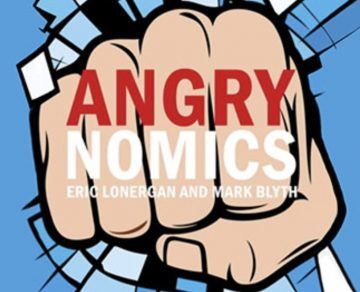 Chris Dillow writes perhaps the most interesting economics blog I know. Its scope is considerable, and despite his declaration of bias – he self-identifies as a ‘marxist’ – he is typically empirical. His recent review of Angrynomics, a book I co-authored with Mark Blyth, raises a fundamental question which I have been reflecting on. It is encapsulated by the rhetorical question with which Chris ends his review:
Chris Dillow writes perhaps the most interesting economics blog I know. Its scope is considerable, and despite his declaration of bias – he self-identifies as a ‘marxist’ – he is typically empirical. His recent review of Angrynomics, a book I co-authored with Mark Blyth, raises a fundamental question which I have been reflecting on. It is encapsulated by the rhetorical question with which Chris ends his review:
“What chance do we have of such reform, given that our existing institutions serve extractive capitalism so well by diverting anger away from its proper target?”
Some context may help clarify this question. In Angrynomics we make a distinction between two forms of public anger: moral outrage and tribal rage. It is important to be clear that these are not subjective classifications that Mark and I have plucked out of thin air. They are empirically distinct phenomena. To observe their existence requires no assumption of relative merit. There seems to be two observable forms of anger which humans express publicly: anger at perceived injustice which I label the anger of angels, and the anger of tribal fans, or the anger of devils. To observe these forms of anger in play all that is required is a trip to a football match (there is always an angry minority) or attendance at an extinction rebellion protest.
In his review, Chris adheres to this typology of anger but argues that ‘extractive capitalism’ has hijacked tribal rage to serve its interests, and subdue the potential of legitimate indignation to create real reform.
More here. And here is a reply from Chris Dillow to this.

 The world’s largest nuclear fusion project began its five-year assembly phase on Tuesday in southern
The world’s largest nuclear fusion project began its five-year assembly phase on Tuesday in southern  We live in a time of personal timorousness and collective mercilessness.
We live in a time of personal timorousness and collective mercilessness.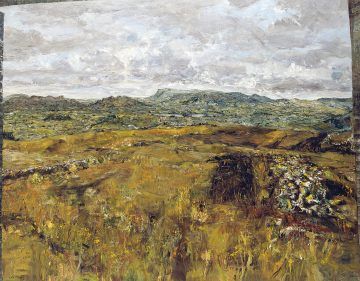 For the poet Seamus Heaney—a kind of laureate of the bog—the landscape always had a “strange assuaging effect . . . with associations reaching back into early childhood.” The bog was liberty and community, as well as labor. This ambiguous, borderless terrain—neither living nor dead, wet nor dry, public nor private—has never been politically neutral. Ireland’s bogs were often viewed by city dwellers as fundamentally moribund: economic and cultural voids, the refuge of brigands, outcasts, and hermits, synonymous with a semi-bestial peasantry—“miserable and half-starved specters,” according to one nineteenth-century account. In folklore, bogs are the lairs of the shape-shifting púca—an 1828 study of fairy mythology called them “wicked-minded, black-looking, bad things”—while in Edna O’Brien’s classic 1960 novel The Country Girls, the protagonists are contemptuously dismissed as “fresh from the bogs.”
For the poet Seamus Heaney—a kind of laureate of the bog—the landscape always had a “strange assuaging effect . . . with associations reaching back into early childhood.” The bog was liberty and community, as well as labor. This ambiguous, borderless terrain—neither living nor dead, wet nor dry, public nor private—has never been politically neutral. Ireland’s bogs were often viewed by city dwellers as fundamentally moribund: economic and cultural voids, the refuge of brigands, outcasts, and hermits, synonymous with a semi-bestial peasantry—“miserable and half-starved specters,” according to one nineteenth-century account. In folklore, bogs are the lairs of the shape-shifting púca—an 1828 study of fairy mythology called them “wicked-minded, black-looking, bad things”—while in Edna O’Brien’s classic 1960 novel The Country Girls, the protagonists are contemptuously dismissed as “fresh from the bogs.”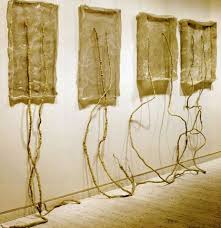 The idea of negation was central to the tensions Hesse created and mediated in her sculptures. One of her favourite descriptions of them was ‘chaos structured as non-chaos’: it captures the distinctive look of her work and its commitment to disruptive repetition. Her graph paper drawings put the contradiction to work, the essential orderliness of a grid providing her with a structure for her chaos. When she chose a green-ruled variety as the matrix for a tightly inked pattern, it was so that the opposition between line and circle, the harmony of repeated shapes and the freeform, would seem almost to hum on the page. This piece is one among hundreds of drawings included in Eva Hesse Oberlin, a travelling exhibition distilled from the enormous collection of Hesse’s works and papers (some 1500 items) housed at the Allen Memorial Art Museum at Oberlin College in Ohio. Hesse wasn’t educated at Oberlin, but at Yale: it was her elder sister, Helen, who chose Oberlin for reasons that, many years later, seem both savvy and poignant.
The idea of negation was central to the tensions Hesse created and mediated in her sculptures. One of her favourite descriptions of them was ‘chaos structured as non-chaos’: it captures the distinctive look of her work and its commitment to disruptive repetition. Her graph paper drawings put the contradiction to work, the essential orderliness of a grid providing her with a structure for her chaos. When she chose a green-ruled variety as the matrix for a tightly inked pattern, it was so that the opposition between line and circle, the harmony of repeated shapes and the freeform, would seem almost to hum on the page. This piece is one among hundreds of drawings included in Eva Hesse Oberlin, a travelling exhibition distilled from the enormous collection of Hesse’s works and papers (some 1500 items) housed at the Allen Memorial Art Museum at Oberlin College in Ohio. Hesse wasn’t educated at Oberlin, but at Yale: it was her elder sister, Helen, who chose Oberlin for reasons that, many years later, seem both savvy and poignant.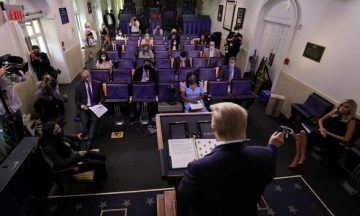 During the past few years of Donald Trump’s deranged presidency, if there is one writer I turn to it is Masha Gessen, whose piercing clarity is gemlike and refusal to equivocate precious. Their ability – Gessen is non–binary/trans and uses they/them pronouns – is surely to do with their Russian American background. As a journalist, Gessen has covered Russia, Hungary and Israel, so is not experiencing illiberalism for the first time. Instead of a weariness however, what is present in the book is a stunning capacity to connect the dots in a way that few can.
During the past few years of Donald Trump’s deranged presidency, if there is one writer I turn to it is Masha Gessen, whose piercing clarity is gemlike and refusal to equivocate precious. Their ability – Gessen is non–binary/trans and uses they/them pronouns – is surely to do with their Russian American background. As a journalist, Gessen has covered Russia, Hungary and Israel, so is not experiencing illiberalism for the first time. Instead of a weariness however, what is present in the book is a stunning capacity to connect the dots in a way that few can. 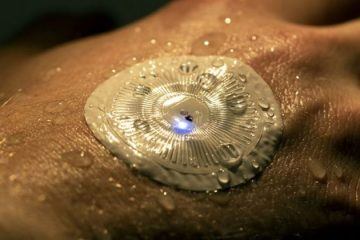 Wearable technologies offer a convenient means of monitoring many physiological features, presenting a multitude of medical solutions. Not only are these devices easy for the consumer to use, but they offer real-time data for physicians to analyze as well. From the
Wearable technologies offer a convenient means of monitoring many physiological features, presenting a multitude of medical solutions. Not only are these devices easy for the consumer to use, but they offer real-time data for physicians to analyze as well. From the 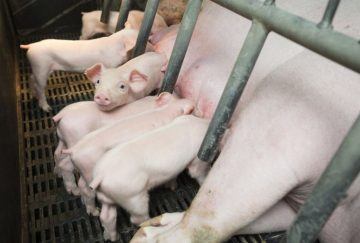 “Never look a hog in the eyes,” an experienced hand told anthropologist Alex Blanchette as they prepared to artificially inseminate sows. “If the animals think you are looking at them, they will freeze.” Like a living, inverted panopticon, hundreds of pigs would watch their handlers from their pens with a petrifying gaze. “They have almost 360 degrees vision,” a former worker recollected. “Sometimes they look like they are not looking at you. . . . but if you look at their eyes, you will see that they are always following you.”
“Never look a hog in the eyes,” an experienced hand told anthropologist Alex Blanchette as they prepared to artificially inseminate sows. “If the animals think you are looking at them, they will freeze.” Like a living, inverted panopticon, hundreds of pigs would watch their handlers from their pens with a petrifying gaze. “They have almost 360 degrees vision,” a former worker recollected. “Sometimes they look like they are not looking at you. . . . but if you look at their eyes, you will see that they are always following you.” Despite occasional and important disagreements, most people are in rough agreement about what it means to be moral, to do the right thing. There’s much less agreement about why we should be moral, or even what kind of answer to that question could be convincing. Philosopher Russ Shafer-Landau is one of the leading proponents of
Despite occasional and important disagreements, most people are in rough agreement about what it means to be moral, to do the right thing. There’s much less agreement about why we should be moral, or even what kind of answer to that question could be convincing. Philosopher Russ Shafer-Landau is one of the leading proponents of 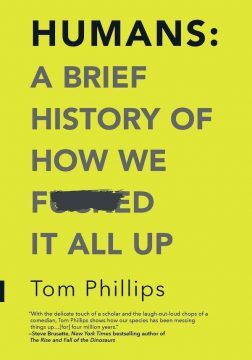 THE WORLD IS LITTERED with the consequences of monumental human screw-ups — environmental, economic, political, social, and now, as we deal with a pandemic, health-related. You might even claim, as Tom Phillips does in Humans: A Brief History of How We F*cked It All Up, that these screw-ups are a defining characteristic of humankind. There’s the everyday type that you and I commit — say, accidentally shattering your phone’s screen on the sidewalk — and then there’s the scaled-up kind — say, killing a river or triggering a famine that results in millions of deaths. In his book, Phillips walks us through tens of thousands of years of human-caused disasters, the results of systematic mistakes that people seem unwilling or unable to learn from.
THE WORLD IS LITTERED with the consequences of monumental human screw-ups — environmental, economic, political, social, and now, as we deal with a pandemic, health-related. You might even claim, as Tom Phillips does in Humans: A Brief History of How We F*cked It All Up, that these screw-ups are a defining characteristic of humankind. There’s the everyday type that you and I commit — say, accidentally shattering your phone’s screen on the sidewalk — and then there’s the scaled-up kind — say, killing a river or triggering a famine that results in millions of deaths. In his book, Phillips walks us through tens of thousands of years of human-caused disasters, the results of systematic mistakes that people seem unwilling or unable to learn from.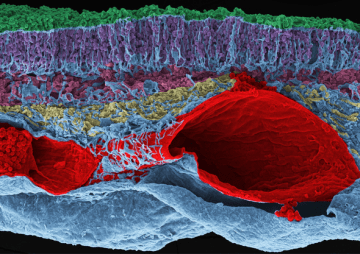 In 1968 an exhibit entitled Cybernetic Serendipity: The Computer and the Arts was held at the Institute of Contemporary Arts in London. The first major event of its kind, Cybernetic Serendipity’s aim was to “
In 1968 an exhibit entitled Cybernetic Serendipity: The Computer and the Arts was held at the Institute of Contemporary Arts in London. The first major event of its kind, Cybernetic Serendipity’s aim was to “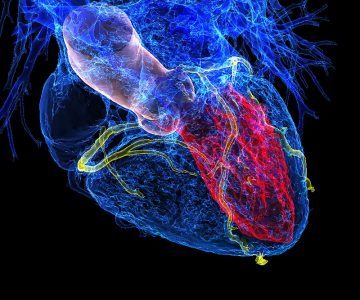 Current methods for predicting heart attacks are woefully outdated, says Cheerag Shirodaria, a cardiologist at the Oxford University Hospitals NHS Foundation Trust, UK. “We basically look at a patient’s age, obesity and whether they have diabetes. The most sophisticated we get is measuring their cholesterol,” he says. Heart attacks are often caused when fatty accumulations inside arteries, known as plaques, result in the narrowing of blood vessels. These plaques then rupture and form blood clots. Age, being overweight or obese and having diabetes are all risk factors, and people in at-risk groups are closely monitored. “But 50% of heart attacks are in people without narrowing, and they’re being missed by current tests,” he says. A desire to drag prognosis into the modern era is what pushed Shirodaria and a group of like-minded cardiologists to set up Caristo Diagnostics. Rather than blood-vessel narrowing, the team focuses on another driver of plaque ruptures — vascular inflammation. The company uses algorithms to analyse information that until now has been hidden in the noise of computed tomography (CT) scans. This enables it to assess inflammation and calculate the likelihood that a person will have a heart attack in a given time period.
Current methods for predicting heart attacks are woefully outdated, says Cheerag Shirodaria, a cardiologist at the Oxford University Hospitals NHS Foundation Trust, UK. “We basically look at a patient’s age, obesity and whether they have diabetes. The most sophisticated we get is measuring their cholesterol,” he says. Heart attacks are often caused when fatty accumulations inside arteries, known as plaques, result in the narrowing of blood vessels. These plaques then rupture and form blood clots. Age, being overweight or obese and having diabetes are all risk factors, and people in at-risk groups are closely monitored. “But 50% of heart attacks are in people without narrowing, and they’re being missed by current tests,” he says. A desire to drag prognosis into the modern era is what pushed Shirodaria and a group of like-minded cardiologists to set up Caristo Diagnostics. Rather than blood-vessel narrowing, the team focuses on another driver of plaque ruptures — vascular inflammation. The company uses algorithms to analyse information that until now has been hidden in the noise of computed tomography (CT) scans. This enables it to assess inflammation and calculate the likelihood that a person will have a heart attack in a given time period. A certain mythology has gathered around the thirty-five year hiatus that followed Coursil’s incredibly fruitful period of musical cosmopolitanism. There is a romantic obscurity to the way in which jazz fans discuss the career interruptions of their favorite players, mistaking hard times and financial exigencies for semi-monastic trials of spirit. A prime example would be Sonny Rollins, who retreated into a prolonged rehearsal session at the height of his fame, practicing all hours on the Williamsburg bridge and bearing solitary witness to the city; or Dexter Gordon, whose incarceration in the fifties secured his reputation as the perennial ambassador of bebop, and an intercontinental comeback kid. Other disappearances are far more lacunar and prolonged, such as that of sought-after bassist Henry Grimes, who devoted himself to poetry and literature during a decades-long stint in the workaday world, only to emerge with startling vigor in the early twenty-first century.
A certain mythology has gathered around the thirty-five year hiatus that followed Coursil’s incredibly fruitful period of musical cosmopolitanism. There is a romantic obscurity to the way in which jazz fans discuss the career interruptions of their favorite players, mistaking hard times and financial exigencies for semi-monastic trials of spirit. A prime example would be Sonny Rollins, who retreated into a prolonged rehearsal session at the height of his fame, practicing all hours on the Williamsburg bridge and bearing solitary witness to the city; or Dexter Gordon, whose incarceration in the fifties secured his reputation as the perennial ambassador of bebop, and an intercontinental comeback kid. Other disappearances are far more lacunar and prolonged, such as that of sought-after bassist Henry Grimes, who devoted himself to poetry and literature during a decades-long stint in the workaday world, only to emerge with startling vigor in the early twenty-first century.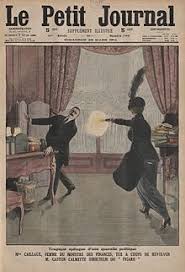 Of the millions of bullets fired in 1914, only two changed history: the bullet fired on June 28 in Sarajevo by Gavrilo Princip’s Browning automatic that killed Archduke Franz Ferdinand, and the bullet fired on March 16 in Paris by Henriette Caillaux that killed Gaston Calmette. As premier in 1911, her husband had by back-channel negotiations defused a war-charged crisis with Germany, grounds for believing he could have worked his magic again three years later, when he would have all but certainly been elected premier again—but for the bark of Henriette’s Browning. Months before the war, anticipating that Caillaux, then the finance minister, would soon be premier, Belgium’s ambassador to Paris assured Brussels: “Caillaux’s presence in power will lessen the acuteness of international jealousies and will constitute a better base for relations between France and Germany.” That was heresy in “official Paris,” where “everybody that you meet tells you that an early war with Germany is certain and inevitable.” Months into the war, the Kölnische Zeitung stated, “If Monsieur Caillaux had remained in office, if Madame Caillaux’s gesture had not been made, the plot against the peace of Europe would not have succeeded.”
Of the millions of bullets fired in 1914, only two changed history: the bullet fired on June 28 in Sarajevo by Gavrilo Princip’s Browning automatic that killed Archduke Franz Ferdinand, and the bullet fired on March 16 in Paris by Henriette Caillaux that killed Gaston Calmette. As premier in 1911, her husband had by back-channel negotiations defused a war-charged crisis with Germany, grounds for believing he could have worked his magic again three years later, when he would have all but certainly been elected premier again—but for the bark of Henriette’s Browning. Months before the war, anticipating that Caillaux, then the finance minister, would soon be premier, Belgium’s ambassador to Paris assured Brussels: “Caillaux’s presence in power will lessen the acuteness of international jealousies and will constitute a better base for relations between France and Germany.” That was heresy in “official Paris,” where “everybody that you meet tells you that an early war with Germany is certain and inevitable.” Months into the war, the Kölnische Zeitung stated, “If Monsieur Caillaux had remained in office, if Madame Caillaux’s gesture had not been made, the plot against the peace of Europe would not have succeeded.”